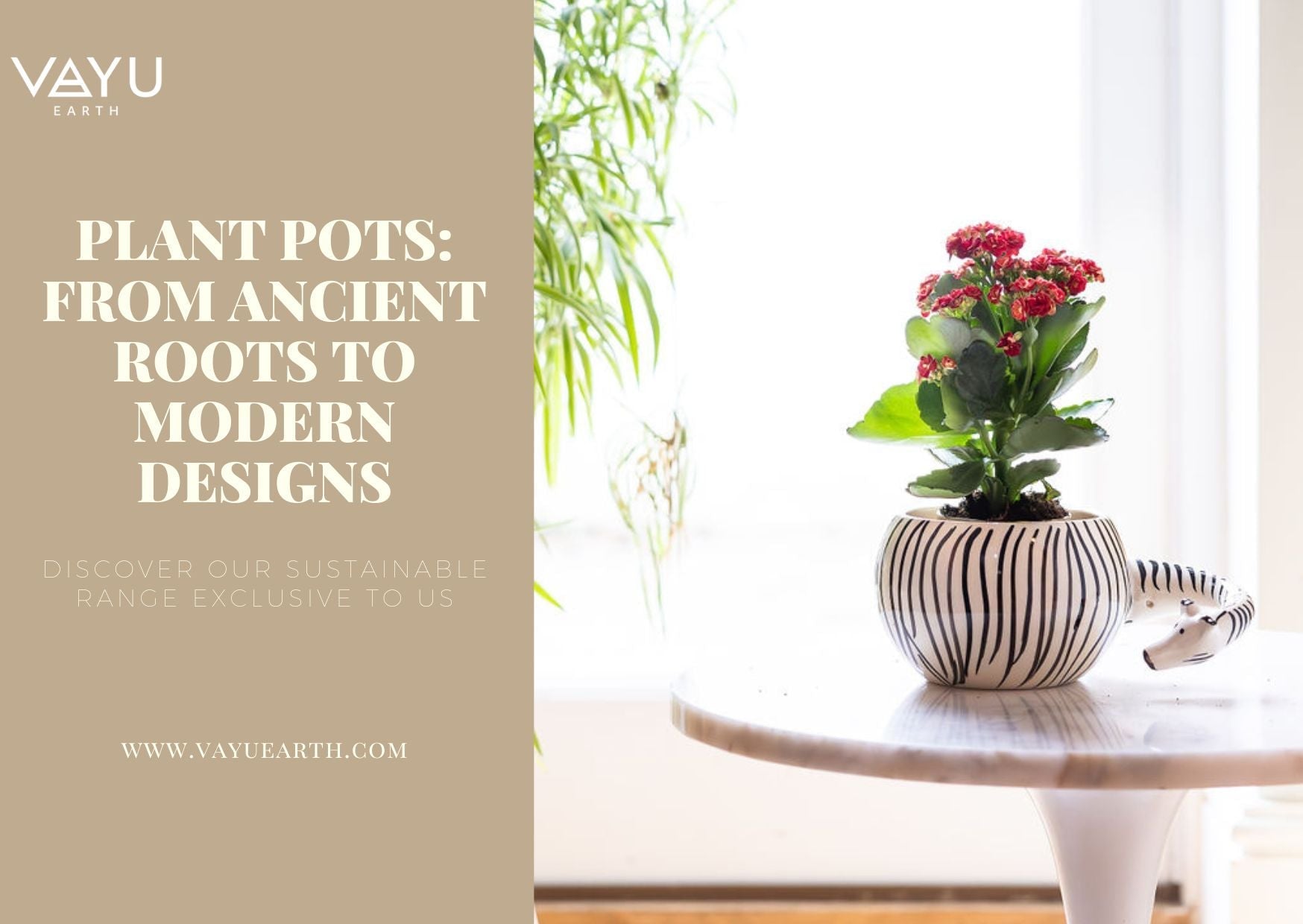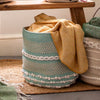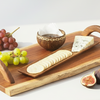The Evolution of Plant Pots: From Ancient Roots to Modern Designs

Plant pots have played a vital role in home decor and gardening for centuries. From ancient civilisations to contemporary interiors, planters have evolved not only in their functionality but also in their aesthetic appeal. Today, a diverse range of materials like clay, ceramic, jute, metal, and even banana leaf are used to craft beautiful yet practical plant pots that elevate indoor and outdoor spaces alike.
Ancient Origins of Plant Pots
The earliest evidence of plant pots dates back to the ancient Egyptians, who cultivated plants in clay containers to grow herbs, flowers, and food indoors. These early clay pots were simple in design, yet functional enough to provide proper drainage and insulation for plant roots. The Romans further refined plant pot designs, often using terracotta to create decorative garden planters that adorned their courtyards and villas.
During the Middle Ages, plant pots became essential for monasteries and herb gardens, where monks cultivated medicinal plants. These pots were typically made from stone or clay to ensure durability. The Renaissance period saw the introduction of more ornate designs as European nobility used elaborate ceramic and marble pots to showcase exotic plant species brought back from their travels.
The Rise of Decorative Planters in the Victorian Era
By the 19th century, plant pots were no longer purely functional but had become key elements in home decor. The Victorian fascination with botany inspired intricate designs in cast iron, ceramic, and even bronze. Wealthy households proudly displayed hanging planters filled with ferns and trailing ivy as part of their conservatory aesthetics.

Photo: Wakefield Handmade
This period also saw the emergence of terracotta pots as a staple in European gardens. The porous nature of terracotta provided excellent breathability for plants, making them ideal for both indoor and outdoor settings.
The Modernisation of Planters in the 20th Century
The 20th century witnessed a dramatic shift in the design and materials used for planters. As homes became smaller and urban living more prominent, lightweight materials like plastic and aluminium gained popularity. These alternatives allowed for greater versatility, especially for apartment dwellers seeking to incorporate plants into compact living spaces.
By the mid-century modern movement, sleek and minimalist planter designs emerged, featuring clean lines and neutral tones. Ceramic and glazed pots became fashionable additions to stylish interiors, blending functionality with artistic expression.
Sustainable and Eco-Friendly Innovations in Planters
As environmental consciousness grew in the 21st century, designers began to focus on sustainable materials for planters. Natural fibres like jute, cotton, and banana leaf became popular due to their eco-friendly properties. Jute planters, for instance, provide excellent breathability for plants while offering a rustic charm ideal for modern interiors.
Materials such as sabai grass and cork have also gained popularity in recent years. These organic materials provide sustainable alternatives that add warmth and texture to indoor spaces. Additionally, cork's lightweight and water-resistant properties make it an ideal choice for hanging planters and wall-mounted displays.
Exploring the Diversity of Modern Planters
Today, plant pots are available in an extensive array of materials and styles, each offering unique benefits:
-
Clay and Terracotta: Traditional yet timeless, clay pots are perfect for maintaining soil moisture while ensuring proper aeration for plant roots. Their warm earthy tones complement various home decor styles.
-
Ceramic Planters: Glazed ceramic pots offer durability with an elegant finish, making them ideal for both classic and contemporary interiors.
-
Metal and Aluminium: Sleek and modern, metal pots are gaining popularity in minimalist and industrial-inspired spaces. Aluminium planters are particularly lightweight yet durable, perfect for outdoor use.
-
Wooden Planters: Crafted from hardwoods like teak or bamboo, wooden planters lend a natural, organic feel to any environment. Their sturdy design makes them suitable for garden planters or statement pieces in living rooms.
-
Jute and Cotton Planters: Soft yet durable, these planters provide a unique texture ideal for bohemian and rustic interiors. Their flexible design also allows for easy storage and transport.
-
Banana Leaf and Sabai Grass Planters: These biodegradable options add an authentic touch of nature to your home decor. Ideal for indoor plants, they promote sustainability while enhancing your space.
-
Marble Planters: Luxurious and stylish, marble planters are perfect for adding a sophisticated accent to modern homes. Their weight and durability make them suitable for both indoor and outdoor arrangements.
Hanging Planters: Maximising Space with Elegance
Hanging planters have become a sought-after home decor trend in recent years. They provide an excellent solution for small spaces by allowing greenery to cascade from ceilings, shelves, or walls. Macrame hanging planters, in particular, blend artistic craftsmanship with functional design, creating a striking visual display.
Combining materials like cotton, jute, or ceramic in hanging planters adds warmth and texture to interiors. They are perfect for showcasing trailing plants such as ivy, pothos, or spider plants, adding vibrancy to your home.
The Future of Planter Designs

As sustainability continues to influence design trends, the future of planters will likely focus on eco-friendly materials and multifunctional designs. Designers are embracing upcycled materials, including recycled metal and glass, to craft innovative plant pots that align with environmental values.
Smart planters equipped with self-watering systems and integrated sensors are also gaining traction. These modern innovations allow busy homeowners to maintain healthy plants with minimal effort, merging technology with traditional gardening practices.
Enhancing Your Home Decor with Vayu Earth Planters
Vayu Earth offers a wide selection of beautifully handcrafted planters made from sustainable materials such as jute, cotton, ceramic, and banana leaf. Each piece is designed to combine aesthetic appeal with functionality, ensuring that your plants thrive while adding character to your living spaces.
Whether you’re seeking a rustic clay plant pot for your kitchen, a sophisticated marble planter for your living room, or a jute hanging planter for your bedroom, Vayu Earth’s diverse collection caters to various styles and preferences. By choosing these artisan-crafted pieces, you not only enhance your home decor but also support sustainable practices and traditional craftsmanship.
Embrace the rich history of plant pots by incorporating modern, eco-conscious designs into your home. With Vayu Earth’s exquisite range of planters, you can create vibrant, green spaces that celebrate both nature and artistic innovation.





